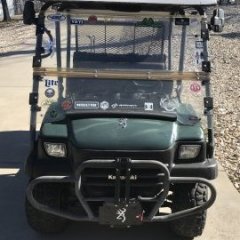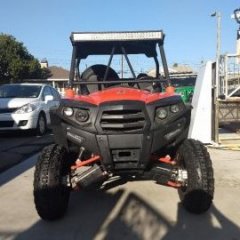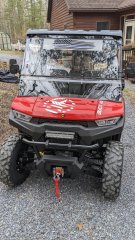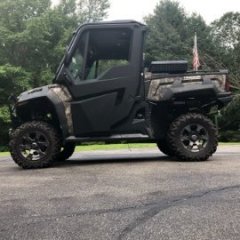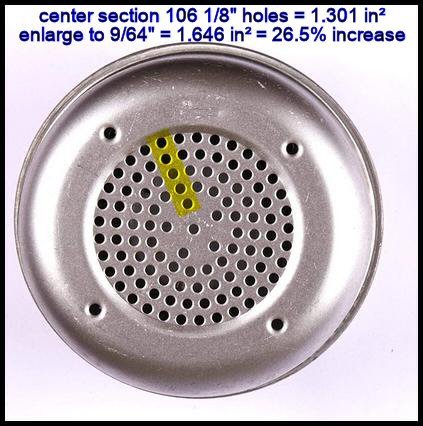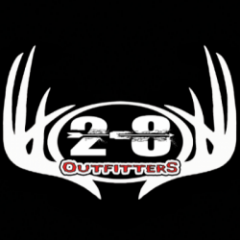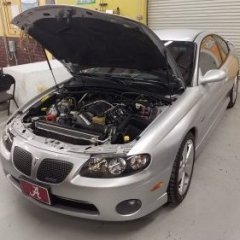Leaderboard
Popular Content
Showing content with the highest reputation since 05/25/2018 in all areas
-
Since I've seen some questions on this I took some pictures and will provide instructions on a valve adjustment for the UT400. This should be the same for the 550's and other various Coleman/Hisun single cylinder models with the cylinder slanted aft. I have seen several people ask of it is really necessary, and read several reports of valves being out of adjustment from the factory. My valves were .004" intake, and .010" exhaust with about 5 hrs on the machine. I've seen different numbers thrown around for factory spec, but I decided to go with 0.005". This is called valve lash. What is is is a gap between the rocker arm and the valve then the camshaft isnt opening the valve. Why does it matter? If it's too large the valve doesn't open all the way, if it's too small the valve dosent close. This can cause valve damage (overheating) as well as loss of engine power (burned fuel is going out exhaust rather than pushing the piston dow). Tools required : 5MM Allen wrench, 10MM box wrench, needle nose pliers, flat feeler gauge set, rags First you need to remove the fan cover on the passenger side. There is a cooling vent hose on the back side, remove the hose clamp and slide it off. From there there are 4x 10mm bolts holding the cover. The forward ones can be accessed from under the seat. Next remove the spark plug from the drivers side. Carefully wiggle the spark plug wire off. Grip it as low as possible and give it a little twisting motion as you pull it off to help free it. Its a tight fit for a socket, but there is a sheet metal wrench in the toolkit that fits it. Unscrew the plug and set it aside. This allows you to spin the motor over freely with no compression to fight. When you reassemble this is a good opportunity to switch to an NGK iridium plug for better performance/less fouling DR8EIX) Next you need to remove the intake and exhaust valve covers. The intake us the forward one. There are 3x 5MM Allen screws to remove. The Exhaust is the rear with 2x 5MM Allen bolts. Both covers have O-Rings instead of gaskets and are reusable. When you remove the rear be careful and use your rags as there will be oil that drips out. Next up we need to spin the motor over to top dead center. Grab each rocker arm and give em a little wiggle up and down. Spin the engine over by grabbing the fan with your other hand. Spin the engine over until both rockers have some wiggle and are loose. Once both rockers are loose slide the feeler gauge in like shown above. Try different feelers as needed to determine your starting spec. You should feel some drag but still be able to move the feeler without too much force. If you need to adjust, use the 10MM wrench to slightly loosen the locknut, then with the correct feeler gauge in place, tighten the top square nut while wiggling the feeler in and out. Once you have it right you need to tighten the 10mm lock nut without moving the square head bolt. Once the lock nut is tight recheck the clearance. That's it, button everything back up and make sure you have it all reassembled before running it again. If you find this helpful give me a thumbs up or comment. If you have any questions or need more help let me know. If there's interest maybe I'll do some more of these6 points
-
Hey Folks There are not a lot of good sources out there for troubleshooting and diagnosing ECU problems with the Massimo Buck, Bennche Bighorn, Bennche Cowboy, & Cazador machines that use the Delphi MT05 ECU. They are all basically the same with different badging, so I thought I'd share some info that I found during some searches. I was trying to help someone diagnose and repair a hard starting issue. The ignition coil was throwing a 0351 code. I discovered how to read codes without an OBDII code reader. The following procedures should help you check your fault codes and clear them if needed. Fault Code Troubleshooting for Delphi MT05 ECU on the Massimo Buck 400, Bennche Bighorn 400, Bennche Cowboy 400, and Cazador 400 *NOTE: The MT05 ECU is not really OBD 2 compliant. It is much more similar to an OBDI system. The MT05 ECU controls either 1 or 2 cylinder engines commonly found on Massimo, Bennche, and Cazador. Much of the ECU info was found here: https://netcult.ch/elmue/HUD ECU Hacker/Delphi MT05 Manual.pdf Delphi EFI System Design Delphi EFI employs 5 sensors to monitor engine performance. 1. Crankshaft Position Sensor 2. Coolant Temperature Sensor 3. Oxygen Sensor 4. Throttle Position Sensor 5. Manifold Air Pressure/Manifold Air Temperature (MAP/MAT) Sensor Delphi EFI employs the following system components. 1. MT05 Engine Control Unit (ECU) 2. Fuel Pump 3. Multec 3.5 Fuel Injector 4. Idle Speed Control Valve (Idle Stepper Motor) 5. Multec Ignition Coil 6. Fuel Vapor Canister Purge Valve Using the Digital Dashboard to Decipher EFI Trouble Codes In addition to commercially available diagnostic scan tools (Big $$$), you can use the engine warning light of the Siemens dashboard to diagnose most of your EFI problems. The digital dashboard receives signals from the MT05 ECU, and the engine warning light will flash a diagnostic trouble code (DTC) if the ignition key is switched on/off for three cycles. When you turn on the ignition, the engine warning light will illuminate, which indicates the EFI system is operational. After the engine is started, the engine warning light will extinguish if the EFI system is working properly. However, if the engine warning light remains illuminated, it indicates the EFI system is not working properly, and there is a system component failure. Deciphering Diagnostic Trouble Codes To read the diagnostic trouble code (DTC), open and close the ignition key three times in rapid succession, as follows: open/close—open/close—open. At this point the engine warning light will flash a DTC which indicates the fault in the EFI system. Refer to the attached fault code table to identify the corresponding problem. The engine warning light will emit a sequence of flashing lights. If the light flashes 10 times, the translated number is 0. If the light flashes one time, the translated number is 1, et cetera. For example, if the MAP/MAT sensor is disconnected, or the connector is shorted to ground, the engine warning light will flash in the following manner (This is an example only). The engine warning light will flash 10 times: The first number of the DTC is 0 After an interval of 1.2 seconds, the engine warning light will flash 1 time: The second number of the DTC is 1 After an interval of 1.2 seconds, the engine warning light will flash 10 times: The third number of the DTC is 0 After an interval of 1.2 seconds, the engine warning light will flash 7 times: The fourth number of the DTC is 7 The resulting DTC is P0107. NOTE: For the system I was helping to troubleshoot, I suspected an ignition coil failure due to the code that was thrown. When it was checked, it was flashing: 10, 3, 5, 1. The 10 represents a 0. So the actual code was 0351. After finding the code, the coil wire was checked and discovered loose at the spark plug. Once it was pushed fully on, the problem was fixed. Most likely, this problem was created after the owner had pulled the spark plug to check the gap. The ECU was rebooted using the procedures detailed below with no more codes being thrown. If there are other fault codes, the engine warning light will flash the next code in 3.2 seconds after finishing the first sequence. After all existing fault codes are flashed, the engine warning light will repeat the fault codes in a loop sequence, until the ignition key is turned off. To clear fault codes you either need an OBDII Fault Code reader and a Delphi 6 pin connector adapter cable that you have to order from China and wait 8 weeks…OR....you can simply reboot the ECU using the instructions detailed below. Rebooting the ECU Perform the following steps to reboot the ECU. 1. Turn off the ignition for 15 seconds. 2. Turn the ignition on/off for 5 cycles. Make sure each cycle lasts about ½ second, verifying the start of the fuel pump for each cycle. If the fuel pump doesn't start during any cycle, begin the entire reboot procedure from the beginning. 3. Turn off the ignition for 15 seconds. TPS (throttle position sensor) re-learn procedure after rebooting ECU. This should be done after replacing the TPS or the ECU....and it is advisable to check proper idle after rebooting an ECU too. Source: ECU Hacker (Reworded process slightly to make it a more sensible flow in my mind): 1. Turn the idle screw one full turn clockwise before starting 2. Start the engine, and run at low idle until the engine warms. Maybe a couple of mins. 3. Idle should be above 1500 rpm. If it isn’t, turn it up to 1700 then shut the engine off. Do another reboot of ECU. 4. Restart the engine and let it stabilize at 1700 rpm. Then turn the idle screen down to 1500 rpm and let it stabilize for a few seconds. Once it stabilizes, set to the final recommended idle speed for your machine. The placard under (or behind) your seat should show idle speed, valve adjustment, spark gap, etc. Typically the 390 cc engines in the "400" machines run at 1600 rpm idle. 5. Shut it down. Wait 10-15 seconds before restarting. The procedure is now complete. Final Notes: I have included pictures of an OBDII connector and the Delphi 6 pin connector in case anyone wants to go buy stuff off ebay or local parts suppliers and build a connector to use for an OBDII reader. But...you can save money and simply do the same thing with code reading and resetting using the check engine light on your dash. Some folks prefer to do it with code readers. Hope the information provided helps if anyone ever needs it but cannot find it in repair manuals. I discovered most of this in some motorcycle forums. The source for the diagrams is here: https://netcult.ch/elmue/HUD ECU Hacker/ Be advised: I am not a service technician. I do not endorse any manufacturers. I do not get paid to help, nor do I want to. This is just a hobby of mine. I enjoy working on things and solving problems. If you run into a weird problem that stumps you, give me a shout. I may be able to give you some ideas...or not. Just know, that troubleshooting thru emails can be challenging. The more info you can provide, the better. Otherwise, I will probably ask you a ton of questions. The good news is, the Delphi system used on these machines is essentially an OBDI and it is very simplistic. If you are methodical and patient, most of your "problems" can be figured out thru a process of elimination. Always go for the simple things first before throwing money and sensors at a machine. Take care - JT5 points
-
In order to connect with the ECU we need two cables. The first is a USB ODBII cable. HUD ECU Hacker’s documentation has a lot of different confusing options, but here’s what I went with and managed to get working, the cable is called “VAG KKL” it is a USB to ODB2 cable. It is available from a variety of sources for $10-15. The second thing we need is a “6 pin delphi to ODB2” adapter cable. It is also available for a similar price. In my case I ordered both from ebay, but there are other sources. Once we have our cable in hand we need to find the plug it in on your machine. My personal rig is a Coleman UT400, but the wire location should be similar for all Hisuns. My cable was located under the middle of the seat area. Just inboard of the battery, where the main wire harness split loom runs. The cable is a 6 pin (3x2) with a dust cap. Remove the dust cap and plug in the 6-pin end of the Delphi adapter cable. Note: When I was done, I left the 6-pin adapter connected, and zip tied it so it now runs to in front of the battery for easier access in the future. Next download and install HUD ECU HACKER DOWNLOAD Open HUD ECU Hacker on your PC It should prompt you to choose a driver to install. This particular cable uses the “CH340” driver (First choice on the menu) click to install, once installed hit the X in the corner to go back to the main page Once the driver is installed plug in the USB Cable, and plug the ODB2 end into the 6 pin adapter. The red led on the adapter should light up indicating it has power. Drop down and pick a com port on the main screen, it should show the VAG KKL adapter as a com port. Click connect on the main menu. It will pop up a bunch of fast scrolling text indicating it is connecting. Once connected you can click through the various tabs to see different data sets. The main menu also has the option to show fault codes, clear fault codes, reset the EPROM back to factory. The other function that may be helpful is recording a log file. You can record a log while operating the unit, and come back later and replay it to try to better diagnose what is happening. Within the various pages you will see the reading from each sensor. Sometimes a sensor reading will be off enough to cause running issues, but not enough for the ECU to realize its an issue. For example if the engine thinks it’s really warm, but its actually cold, it may not inject enough fuel to start. There are also more advanced functions, like adjusting fuel mapping, but that is beyond the scope of this tutorial. Full HUD ECU Hacker Documentation (Very technical reading) If you find this helpful give me a comment below or a thumbs up.5 points
-
White smoke is usually coolant leaking into the cylinder. Sounds like a blown head gasket to me.4 points
-
Just wanted to give update . It was the ecm. Put new one on and got spark immediately to front cylinder. Ran but smoking and no power. I checked back cylinder and no fire. Pulled coil to check with meter and found wire was not getting good connection where it plugs into coil. All good now . She will scream !!!. Next is to figure out why 4x4 switch wont turn. Thanks for all the imput....4 points
-
Hello to anyone who reads this. I am Jon and I own J&M Outdoor Power, a very small, small engine repair shop. I was approached by Coleman about 6 months ago to become one of their Warranty Centers. I recently received 3 different UT400's and a UT500 all with similar issues. These units range from 2 months to 2 years old. Customers state that the unit(s) was/were running fine, then heard a pop and a loss of power, two would no longer start. The two that would run would not achieve normal operating speed (around 20mph I would say) without redlining the RPMs. I quickly found that the Valve lash on each unit had become too large on some(both intake and exhaust) and too tight on one(just intake). After setting the gaps to .005(I found multiple different people suggesting bigger and smaller gaps, but no definitive Coleman Spec number yet) every unit starts, runs, and achieves top speed without issue. I don't know how many others have come across these issues, and I wanted to get something out on the web for others in the same predicament. Please let me know if you have had similar issues. Edit: I realize that this will not be a fix all solution for this issue, as the oil level and condition should be verified before moving to the valves. Many times improper oil conditions will cause valve lash to change. These units all have good oil and proper oil changes.3 points
-
Hello again! I now have a pretty good running Coleman UT400 after a top end rebuild, wet clutch rebuild and a repaired crankcase... ! It plows snow great, but I was also having the jumping out of gear problem, mainly reverse, but a couple times out of forward. I would quickly place it in N and then let the engine idle down and shift again. This worked most of the time. I did some research and found that some have modified the shift linkage. The problem with just adjusting the shift cable is that it really NEEDS more throw, not an adjustment. From what I've read and viewed on the Internet, the linkage arm needs to be about 3/4" longer to gain more throw in both directions. On YouTube, the guy had to remove the shift linkage hole trim and notch the side of the dash to get the shift linkage off the pivot pin. BUT this is NOT necessary. When the "E" clip has been removed and you fish it out of the firewall somewhere, the shift lever is now loose. I had to pop the top of the shift knob off, remove the retaining screw and then heat the lower portion of the knob to get it to come off the lever. Once you have the shift lever loose, push it towards the right to slide it off the pivot shaft. But it won't come off just yet. Use a small pry bar/screw driver and slide the nylon flanged bushing out of the left side of the lever. This lets the lever slide off and get into a "loose" condition and it will twist and come right off without removing the dash trim, that could be a bugger to get back on correctly. Once the lever is off, press out the other bushing so when you're welding on the linkage arm, you don't melt the bushing. I found a piece of scrap metal the same thickness as the lever arm, just over 1/8" thick, close to 3/16". I cut my arm and beveled the edges for better welding. I added a piece just over 5/8" long and kept about a 1/16" gap between the arm and the new piece. Once welded on bother ends, it adds up to just about 3/4" or so. I reinstalled the lever after painting it and did an adjustment on the cable. By the way, it's easier to remove the cable from the bracket on the frame. This gives you more clearance to maneuver in that area with your hands. ALSO, you will need to get a 12" adjustable wrench and slide it over the cable mounting bracket and tweak, to the front, the steel so the cable is pointed upward a bit to now realign with the new longer shift arm lever. There's more than enough metal for the tweak and it will line up perfectly. I now bottom out the shifter on the transmission BEFORE I run out of throw on the shifter... I've tested it just a bit so far and it shifts much better with the longer throw. One of the Coleman authorized repair facilities said that he worked with Coleman to get a new part that's longer by 3/4". He's modified a few and it works perfectly for him. Just doing the cable will just short you on the other end. Here's some pictures of my modified shift lever etc.3 points
-
3 points
-
I have come to the conclusion @Joe Toup must be one of the very best, most helpful members here!!! He has been tireless sharing his knowledge and expertise helping me solve a problem. I am sure I'm near a good solution thanks to Joe!!👍👍👍3 points
-
There are actually 5 disc brakes on these machines. 1 for each wheel and 1 on the rear driveshaft for the parking brake. I've read several complaints of the parking brake one being too tight from the factory so I would check the cable and make sure there's a little slack when the parking brake is released. If that is good I would jack up each corner Individually and spin the wheel to listen for noise and feel for dragging. That should help pinpoint where the issue is.3 points
-
anybody else getting spam /fraud private messages on here besides me? How do I report it? He calls himself Maria .under ORANGE 15 name.. wants to hook up in UTVs .. con artist in Pakistan probably.. Cant ADMIN block this crap ? geesh3 points
-
Just looked at the Lowes add for that, pretty much looks like an MSU 500/700 that Hisun made for Massimo back then. Take a good look at the badging on parts to see who it's actually made by, my guess is it's still Hisun.3 points
-
Its my 2nd day on this plat form. I'm new here in this community but in these two days I got some Premium recommendations. I was in search of these recommendations form the past few months. Thanks you so much for creating such kind of the community. Regards: Zeeshan Mehmood3 points
-
Hi, all, I am here to say i have found an excellent source for kawasaki parts, It's run by Eddie Babbit. It is called Kawasaki Partshouse. run by Babbits online, Muskegon Michigan. http://www.kawasakipartshouse.com/oemparts Just the other day i ordered piston rings, for my Mule 550, They got here and a Oil ring, and smaller ring were missing from the box, Kawasaki took responsibility for the "Accident" and I had also contacted babbits, and they replied and they said" keep the old rings, order a new set and you just pay shipping" so i got $30 piston rings for 8.95!!!? Free shipping on orders over $50!!!3 points
-
Put 15 miles on it today mostly on the beach in 4WD--the front diiferential is definitely smoother and quieter, and engaging/disengaging 4WD and front lock more positively with the ATF...3 points
-
14 downloads
Here are a couple more 3D printer files for the HS400/Coleman UT400 & Outfiltter 400. Included in the .zip file are my version of a seat belt interlock defeat insert (SeatBeltThing-01.stl) and an oil filler adapter allowing a 1/2"I.D. hose to be attached making adding oil a less messy operation (OIlFiller-whole-03.stl) --both may also work on other UTVs with similar the seat belt connectors and a 3/4" x 10 threaded dipstick...3 points -
3 points
-
3 points
-
3 points
-
3 points
-
3 points
-
3 points
-
3 points
-
3 points
-
My dealer just got parts this morning (purchased on Jan. 20th) - I should have it by the weekend!3 points
-
I have the factory service manual available for the Buck 400. Just send me a message with your email and I'll get it to you. Although there is no charge for this, it would be great if you would visit my website where you could donate any amount to help do things like this with others who need it. Again, there is no charge for this manual, and no obligation to donate. But if you did, I would thank you for sure. Have fun on the trails. www.warriorsoffroad.com Matt2 points
-
2 points
-
Its' not a car, this is a motorcycle engine with a small stator charging system. You can't expect to run high wattage accessories like a heater or huge light bars on these things . That will overwhelm the charging system, drain your battery an stop your engine. Could damage the charging system and voltage regulator too. You only have about 10 amps extra to run any accessories including lights.2 points
-
Paint chip is no good, but doubtful that it made it thru the filter, so it's likely been there, or got knocked off when you were working on removing things. Code 201 indicates that it is getting a weak or unexpected signal from the injector. The fuel metering is done by pulsing the injector open. The ECU expects it to be X resistance and it gets Y resistance instead and throws a code. This could be a failing injector (the internal solenoid may be failing) a loose or intermittent connection, chafed wire partially shorting to ground, moisture or corrosion in a connector, etc. It's likely intermittent, but will eventually get worse. When it's happening it will throw the code and give the engine the wrong amount of fuel causing stalling, performance issues, no start, etc. If it were me I would visually inspect the Injector wiring for chafing, check inside the connectors, and if I didnt find anything just throw a new injector at it. You can also check resistance of the injector, but if it's intermittent it may check out ok when you happen to check it.2 points
-
2 points
-
You might have missed a wire connection or something similar. It's not that uncommon to break other stuff while you're working on something. It happens, and you shouldn't worry about it. Just move on, and focus on finding the problem. You need to go over all the wiring that might have been disturbed, or disconnected, while fixing the last issue. It cranks, but have you looked to see if it's got spark? If not, then check the coil2 points
-
Update on my Axis 700. Contacted Lowe’s to explain what happened. Store manager, Fatima, in Mechanicsville VA was awesome. She paid for my gas for the round trip back which was $170 and then doubled it. She then gave me a new 700 with full tank of gas. It ran good yesterday so we’ll see. I told her if any happens again, I will be taking it to the nearest Lowe’s for a full refund and she said she would make sure it was taken care of. The original 700 did start after a trickle charge. Had to be a bad alternator, or loose wiring. These things do happen. I wish I could purchase a more expensive utv, however I lost my job because I refused to take the vaccine, so I’m on a budget. This definitely fits my budget. Great deal when you add my 10% military discount.2 points
-
2 points
-
Massimo recently updated their customer support. I know some of us have had less than Stellar response from Massimo in the past but it looks like they've made a major upgrade and taking a big step forward. I entered a a case on their website you can open a case under your account with a broken part under warranty and was skeptical but I got a call back the next day and the tech had me send a picture of the broken part and they shipped out a new part under warranty same-day2 points
-
https://www.501parts.com/wp-content/uploads/2015/06/2004-2007-Rhino-660-Manual.pdf2 points
-
Okay I think I figured it out, apparently that piece should have stayed on the engine and not came off with the oil filter, so I have installed back on the engine and then put the oil filter on had a momentary brain freeze.2 points
-
That is just normal operation and the same with cars and trucks! But the issue is with these the firewalls are not insulated!!! so we feel it2 points
-
Your probably picking up the heat that the Radiator Fan is throwing at the dash. There is a guy in Mississippi that makes a Radiator deflector shield that mounts to the back of the Radiator and deflects the heat down to the ground. I installed one on my machine and it does help a lot with the heat. The shield is also hinged so that in the winter time you can lift up on the door and now you have the heat coming back to the firewall to help with warmth in the cab. The only thing I can’t tell you yet is how much dust is the shield going to kick up while on the trail. I’m scheduled for another trip to the Hatfield And McCoy trails in October and will find out then.2 points
-
Thanks to all in this community for responding. So I’m strictly an amateur, but I read and then researched the advice generously offered. I’m happy to report that the case housing the belt drive had a preexisting plug, I pulled that plug and roughly 8 ounces of water poured out. I left the plug out for a couple hours, hoping to allow it to dry, and it started right up and engaged and drove normally afterwards. Again, thanks to all who responded, very thankful.2 points
-
I searched for quite a while for a replacement rack and pinion.. I could not find one other than the ridiculously priced replacement from American Landmaster. I ended up rebuilding mine. It was not to bad to get apart. the housing , gear and steering gear bar were in good shape. the problem was finding spacers that would hold the steering gear bar straight and let it move side to side. I went to a local Hardware Supply that only sold nuts, bolts..etc. They had some spacers that fit perfectly. across the street from that place was a bearing place. They had oils seals that fit the open end perfectly. After I got the steering box greased and assembled I hammered in the oil seal at the end to hold it all together. I was worried the oils seal may come out with use, but months later and lots of riding it never moved. All the parts were around $25. The rebuild was cheap and easy once I secured the correct spacers and seal.. The spacers were loose bulk and the bearing place opened the bag on the seal to look at the fit. When I bought everything I did not get any part numbers or sizes. The part on mine that was really worn was the steering shaft. The end that connects to the steering box was completely rounded out. I ended up making my own steering shaft with two steering shaft ends and a piece of steering shaft. It was much higher quality and would never strip out. But, for the same money I could have just bought the overpriced new shaft from American Landmaster. It would have been much easier. As far as other parts.... Anything that is specific to the Bulldog can only be found through American Landmaster and some of those parts are no longer available. The Frame and Plastics: Fenders, roof, bed..etc are all oem parts. I bought those from Tractor Supply. They used to be an American Landmaster dealer until last year. They were much cheaper than American Landmaster and if I had them shipped to the store for pick up there was no shipping. You need to search Google for dealers selling these parts. Sometimes you will find old stock cheap. You can also use parts from different models that are actually the same part. American Landmaster will give the parts a different model number for the same part. Example: The rear fenders for a Bulldog are sold individually at a ridiculous price $60+ and high shipping cost. That is $120+ Shipping. Yet the rear fenders for the 265 model ( The cheaper version of the Bulldog ) are sold by the pair for $39.99 and can be found on Ebay sometimes with free shipping. They are exactly the same part. As for mechanical parts, most of them are Golf Cart and Go Kart parts. It takes some searching to find the correct parts. Most I found were E-Z-GO Golf Cart parts. If you have a specific part you are looking for and I bought the same one, I can look to see if I have the info. I bought the majority of mechanical parts on Ebay and Amazon.2 points
-
2 points
-
I recently acquired a new 2020 Coleman Outfitter 400 and overall am quite pleased with it. I had the "too be expected" loose bolts (first thing I checked), all related to the final assembly conducted by the pimple-faced kid "mechanic" at Tractor Supply.--the bolts in the upper driver's side roll bar joint were just hand tight, as were those of the upper seat belt anchors--but other than that it had been pretty well assembled. The included owner's manual is not current; it speaks of using the choke to cold-start the motor (it's EFI, no choke), and shows the ignition and lighting switches as dash-mounted when in fact they are on the steering column. It also direct you to remove the seat to change the spark plug--except that on this revision the cylinder tilts rearward and the cylinder head in found beneath the dump bed. Other maintenance tasks are similarly ill-described and it is generally useless. I did find the exhaust note to be a bit strident and devised the following to tone it down a bit. I used one of those inexpensive 1" NPT female inlet B&S "muffin" mufflers that have been around for decades, and a steel 1" EMT to steel box adapters that have been available for a like time: 1" EMT has an outside diameter of 29.5 mm, the tailpipe extension on the beast is 28 mm O.D.--so I use a partially overlapped cylindrical shim spacer of 28 ga. (0.47 mm) galvanized sheet metal to fit the EMT adapter to the tailpipe . Bedded well in muffler putty the single set screw on the adapter mounted it up quite firmly.On my first ride I found the motor to feel and sound a bit constipated--so i drilled out the 106 1/8" holes in the faced of the muffin to 9/64". This is a 26.5% increase in area [(9/64)^2 / (1/8)^2 = 1.2656] That made the difference needed to restore proper flow without making it too loud again:It is arguably not a pretty as some of the $100+ aftermarket alternative, but at $15 for the muffler and adapter it better fits my budget.Make sure you get the genuine B&S part (# 392989) as the 3rd party clones lack an inner baffle that makes them inherently louder than the B&S piece. FWIW--I also removed the front anti-roll bar--and have found little to no adverse effect on handling (and arguably some positive effect)--it also got rid of an annoying rattle from the low-quality driver's side roll bar tie-rod end. Put in an iridium spark plug too... [update] For anyone who cares. I have re-drilled the 106 outlet holes to 5/32" which seems to be a sweet point. I had the beast running 45 mph (indicated, 40 by GPS) t'other day and it felt a bit "held back" so when I got home I hogged out the holes to 5/32"--another 23.4% area on top of the 9/32' holes (56% more than the original 1/8" holes). Went out today and got it going 53 mph (indicated, 47 per the GPS). Coleman and Hisun claim 38 mph top-end for the HS400 but I knew it had more than that. So, I Think the 5/32" holes are about optimal. I need to take the B&S thingy off and see what it can do, however it (the B&S thing) is so nicely mounted and sealed now that I don't want to mess with it... [/update]2 points
-
Aren't fault codes (if found), automatically displayed on the dashboard? Typically with other models, it'll blink a sequence to the dashboard clock, that's then decoded to provide the coresponding code. But even if you find a code reader, I'd be surprised to see an OBD2 port. More likely it's a Delphi.2 points
-
I found out yesterday that I can pick mine up on Saturday (Illinois dealer)2 points
-
Mind if I share? I have a 4 year old and a 5 year old girl. I'm doing it all solo. I'm a work from home EE with a huge French company, who came back to me this week with there is nothing they can do for me in the middle of this pandemic. With no school, no daycare and no options from my company, I had quit yesterday. My silver lining is I got this Mule FX already paid for -and last Christmas I bought 20 acres near the family farm. There is a class 1 trout stream (restocking not needed) running through the bottom of the land and another 10 acres tillable up top. 80% of the surrounding land belongs to childhood friends or family. Everything (except for the highway) out there is open to UTV's. I got a 20 minute straight shot of ATV route from home to there and an abandon RR track that leads straight to the small town I grew up in. I hope to have one hell of a great summer.2 points
-
The back plate of the hub brake drum will interfere also if its bent out of alignment. I had to adjust mine after some repairs with a mallet.2 points
-
Stay as far away from Hisun as you can, fit and finish nice but I bought a truck load and every single machine failed in the first 5 miles and took months to get parts. 5 out of 5 generators failed as well and they would not offer any warranty support! They set up dealers just to get rid of inventory. Units that cannot be retailed to dealers goes to the auction house and drives the value down, Nada wont ever put a resale value for Hisun on their website. They do not support dealers, I finally got my last one to the auction house and the throttle cable broke on it way to the selling line! Its like throwing money away doing business with these folks... Run away and hide from Hisun as fast as you can! or just send me the cash!2 points
-
I have a new Trooper 1000 starter, new shift cable, new electronic 4 wheel drive unit, 2 new master brake cylinders and a used shim for setting up the diff ring&pinion. Message me! Offering here first before I put on ebay. rocmoc n AZ/Mexico2 points
-
Couple of things here. First, the valve covers on my car are in the 7ft. lbs. range. Very similar. You said that you tightened it as tight as you could with a ratchet. 7ft. lbs. would be about as tight as you could do with a nut driver. So a quarter in. ratchet would still be medium tight. Second, don't ever use pliers of any sort on anything that's stripped. Vise grips will work best. In this type of situation, go for the win on the first try, because sometimes there's not a second chance. If the pliers slip, they'll just make the job tougher. Since it all worked out, no harm done, and good job! Now, on to the flywheel, and keeping things from spinning. A simple trick from back in the day could help here. Try feeding a rope through the spark plug hole. Fill the cylinder up with rope, and leave it in place. Obviously you'll want to leave enough rope hanging out, so it can be removed afterwards. This will GENTLY bind the piston, so it can't cycle. Use a good rope , that won't leave tiny rope bits. And try to coil it into the cylinder as it goes in. It's been a long journey buddy, and now you're getting close to the end. Don't forget why you came this way, instead of taking the easy way, and just paying the money. The things you've learned here will serve you well, throughout your whole life. Really...its a small price to pay for that kind of education. Keep those pictures coming!2 points
-
check with motorcycle doctor, better pricing and keeps lots in stock.2 points
This leaderboard is set to New York/GMT-04:00




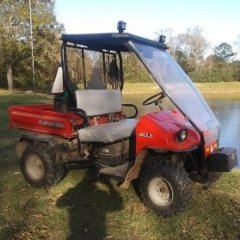
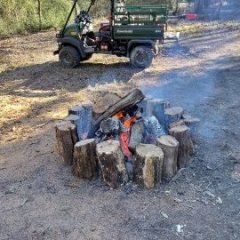
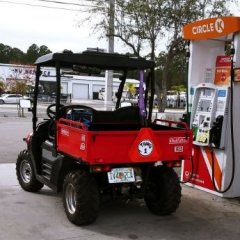




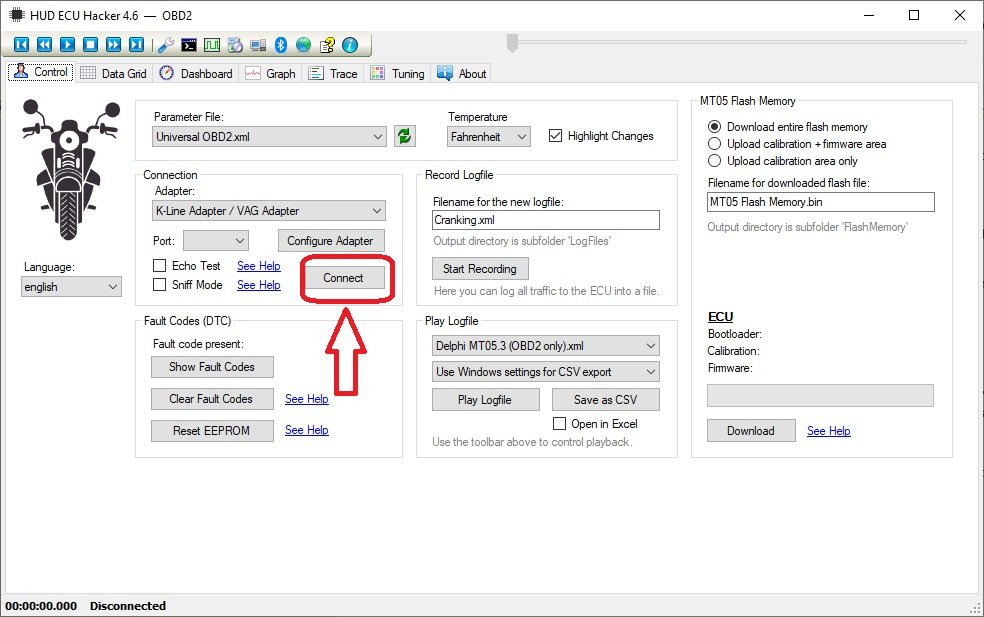






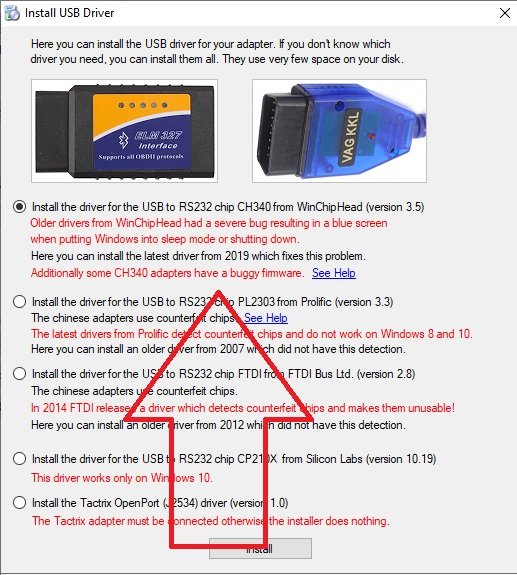




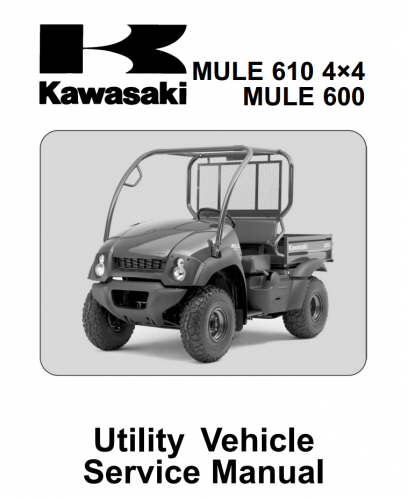
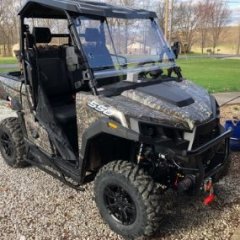

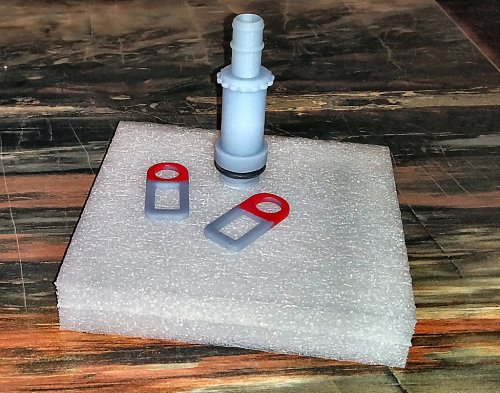
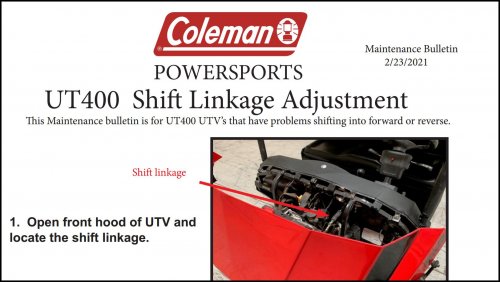
.thumb.jpeg.066fe53fd45b5795c37b2d989ac3a506.jpeg)



